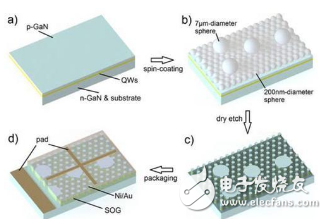InGaN is a key material for blue LEDs. Recently, an international research team published a core mechanism for limiting the indium content of indium gallium nitride films. The study was published in the journal Physical Review in January this year. Materials.
In order for the III-nitride LED to emit red and green light in the RGB three primary colors, the indium content in the indium gallium nitride quantum well (Quantum Wells) is generally increased. However, the latest research has found that efficient red LEDs and green LEDs cannot be derived by conventional methods.
Despite the advances in green LEDs and laser technology, researchers have been unable to overcome the limit of 30% indium indium gallium nitride, and the reasons are unclear, and it cannot be determined whether it is affected by the growth environment or the basic factors.
Until January of this year, an international research team of German, Polish and Chinese researchers explained the problem of limited indium content and further explained the mechanism of this limitation.
The study pointed out that scientists challenged the indium content limit, so they grew a single atomic layer of indium nitride (InN) on gallium nitride (GaN), but the experimental results show that the concentration of indium has remained at 25% to 30%. It is impossible to continue to rise, which shows that the limitation of indium content is not affected by the environment, but the restriction mechanism of InN itself.
The researchers used advanced transmission electron microscopy (TEM) and Reflection High-Energy Electron Diffraction (RHEED) to observe that nitrogen was found when the indium content reached 25%. The indium gallium monolayer exhibits a regular arrangement, that is, an indium monoatomic column and two gallium atomic columns are alternately arranged.
After comprehensive inference calculations, it can be known that atomic ordering is affected by specific surface reconstruction. Indium atoms are not bonded to three atoms, but are bonded to four adjacent atoms, which makes indium. A stronger chemical bond is formed between the nitrogen atom and the nitrogen atom, and such a property allows the indium gallium nitride to grow in a higher temperature environment and has better material quality.
However, the indium content in this sorting can only reach 25%, which is a limit that cannot be overcome under general growth conditions.
Dr. Tobias Schulz of the research team said that the limitation of indium content causes indium gallium nitride to not excite red and yellow-green light, so new methods are needed to solve it.

Insulated Copper Tube Terminals
Insulated Copper Tube Terminals,High quality insulated terminal,copper tube terminal
Taixing Longyi Terminals Co.,Ltd. , https://www.longyicopperterminals.com
